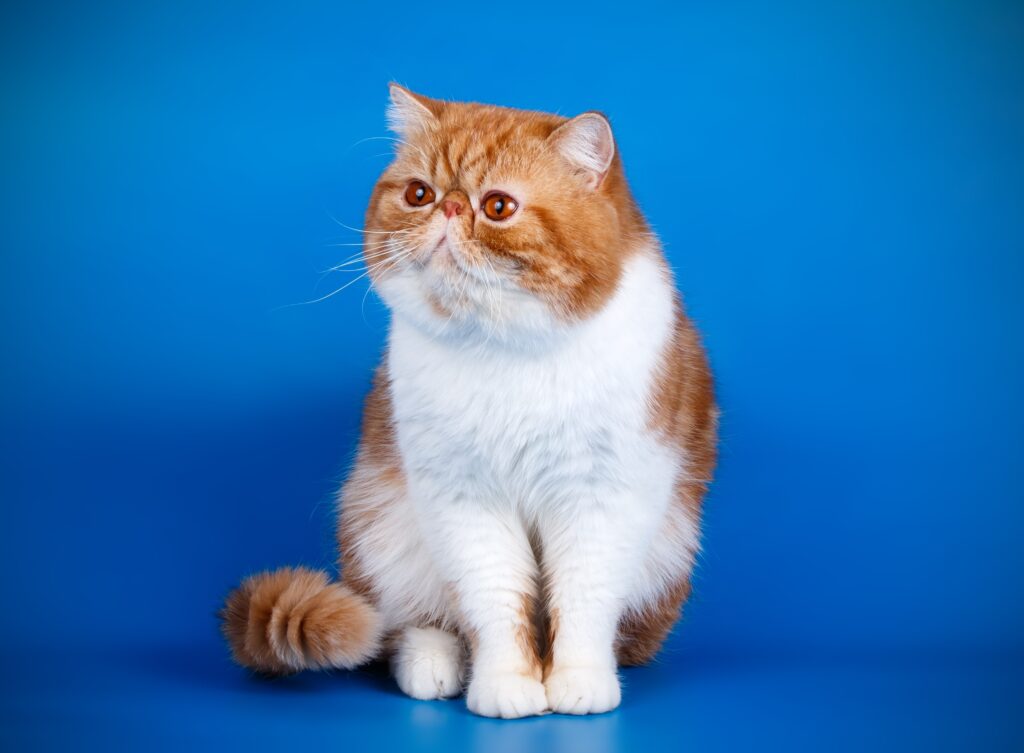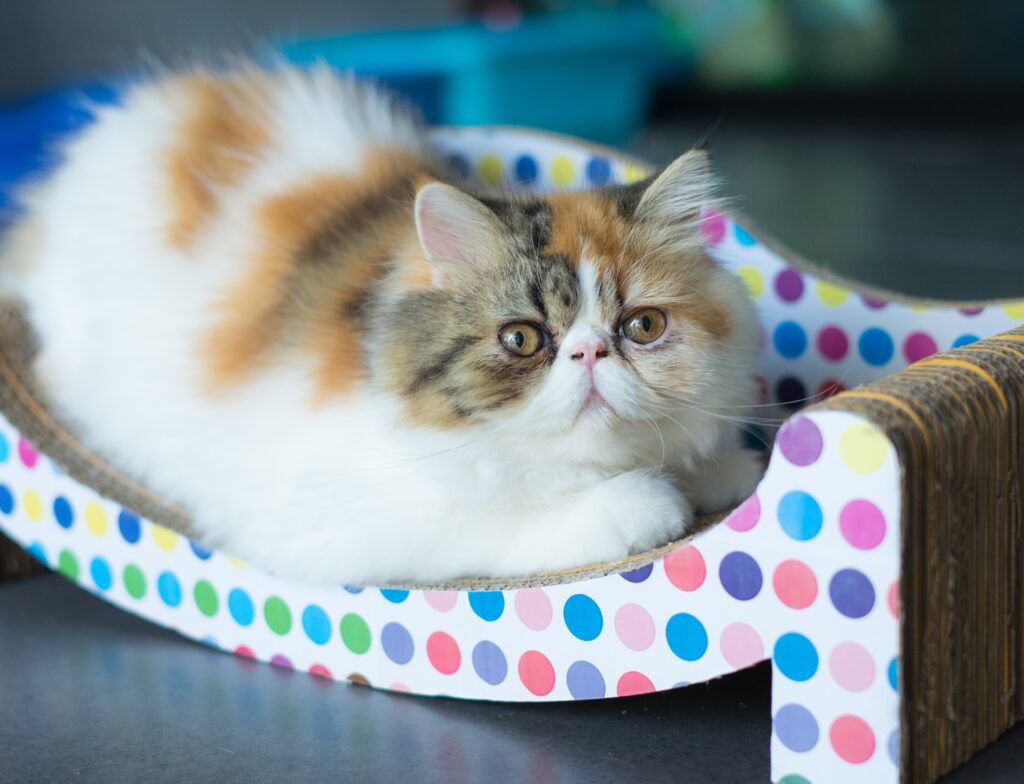The Exotic Shorthair is essentially a shorthaired version of the Persian, with the same stocky build, large round eyes, shortened muzzle, and somewhat grumpy expression. Their coat is thick and short.
Like Persians, they are generally calm and relaxed cats that enjoy their owners’ company and make excellent lap cats.

Description and Characteristics
The Exotic Shorthair meets the same physical standards as the Persian breed, with the exception of the coat. They are medium-sized and heavy-boned with shortish legs, a large rounded head, ears set far apart, and large round eyes. Their muzzles are short, varying from partially shortened muzzles to extremely flattened faces. Their coat is dense and fluffy, standing out from the body due to a rich, thick undercoat. The coat comes in all colours.
In character, the Exotic Shorthair is sweet and gentle and prefers a quiet life. They are not overly active, preferring to snuggle up with their owners, although, as a feline, they will, of course, have bursts of activity. As a generally inactive cat, attention must be paid to nutrition and ensuring time is allowed for regular exercise with interactive toys. Generally the Exotic is able to take care of its own fur, although a weekly grooming session is recommended to reduce shedding and hairballs. Due to their flattened faces, their tear ducts are prone to overflowing and Exotics need to have their faces regularly cleaned to wipe away tear stains.
As with the Persian, the Exotic is a breed which has seen its looks altered over recent decades through selective breeding. This has seen the development of increasingly flat-faced (brachycephalic) cats, with very short muzzles. Unfortunately, the implications of this type of breeding are cats which can suffer from serious health and welfare issues. Cats with extremely flat faces suffer breathing difficulties, skin and eye problems, birthing issues and struggle with everyday activities such as eating and grooming themselves effectively. Prospective owners should be aware of these extremes and what that means for their cat’s overall health and well-being. Owners should therefore spend time researching these issues and choosing a responsible breeder that is not breeding extreme examples of this breed.
Health and common issues
As mentioned above, the Exotic Shorthair is a flat-faced (brachycephalic) cat and depending on how extreme the flattening of the face is, they can suffer from very serious health and welfare issues. The change in muzzle length causes significant changes to the shape of the whole skull and the associated structures. This includes jaw deformities, which can cause problems with eating, drinking and grooming and lead to dental disease. They also have small nostrils and a soft palate which is too long, which can cause breathing problems. Additionally, tear ducts cannot follow their natural path and drain properly into the nose, which causes the eyes to run and creates tear-staining on the face.
Exotics can also be prone to polycystic kidney disease (PKD), a disease that forms cysts in the cat’s kidney, causing organ failure. PKD can be detected through genetic testing or ultrasound and responsible breeder will screen their cats. There is also a higher incidence of hypertrophic cardiomyopathy (HCM) in Exotics which causes the walls of the heart to thicken reducing the volume of blood within the heart and preventing the heart muscle from relaxing properly between contractions. There are HCM-testing schemes available, which involve genetic testing and/or regular heart scanning).






